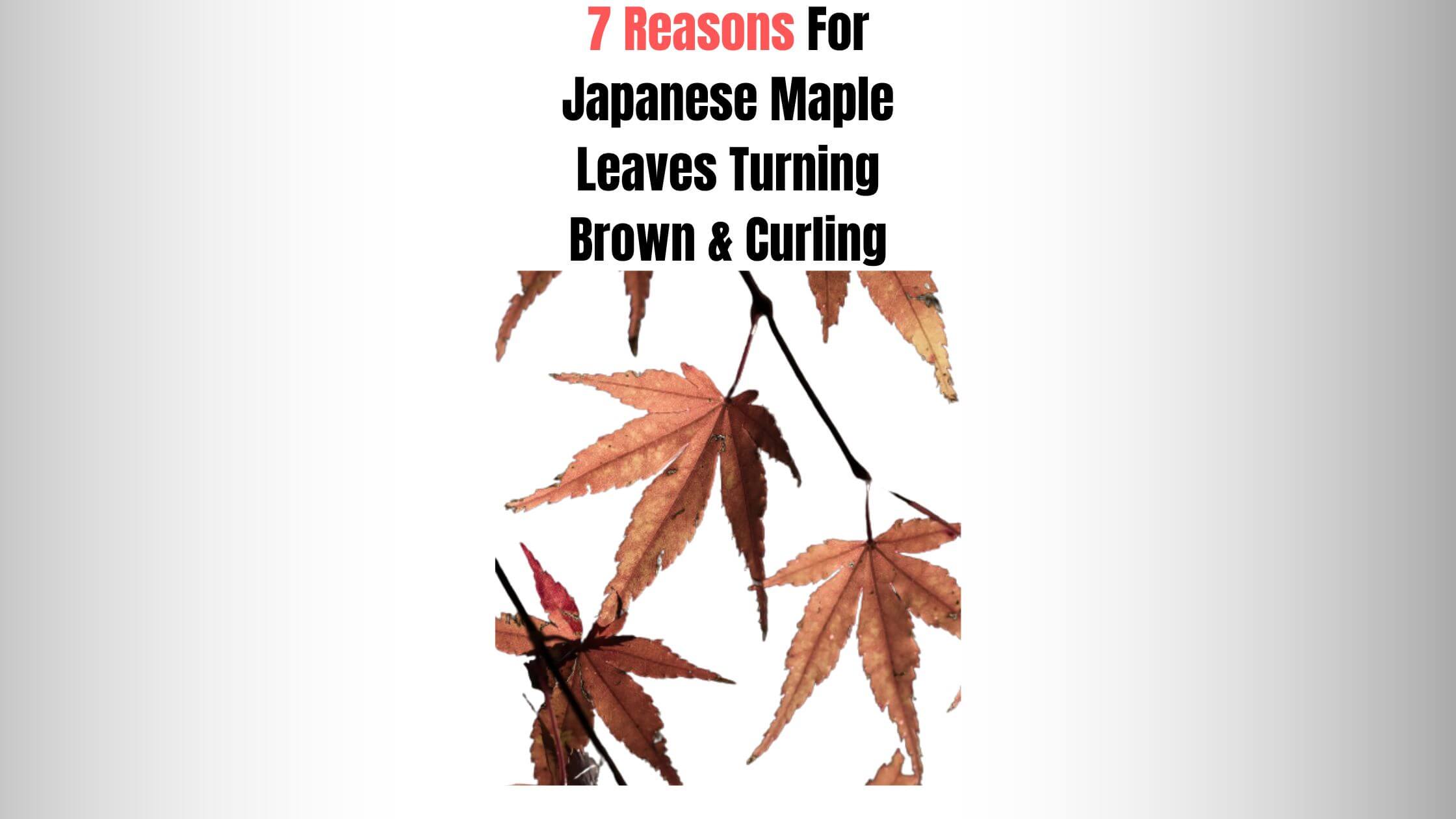
Japanese maples are famous for their attractive autumn foliage and vibrant spring blooms. But just like any other plant and tree, they are also prone to experiencing problems with their leaves.
This article will discuss the most common problem you are likely to face with Japanese maple tree leaves, including down leaves, curling leaves, red leaves, yellow leaves, and black leaves.
All this information will give you a boost in confidence and help you in diagnosing your tree and treating it properly. Since the Japanese Maple Tree requires slightly acidic and well-balanced soil, you should consider testing the ground from time to time.
In most cases, improper care and poor-quality soil are the primary culprit of Japanese maple tree leaves turning brown and curling. Any environmental stress may also cause the same issue.
7 Reasons Why Japanese Maple Tree Leaves Turn Brown and Curling
There can be many causes of tree leaves turning Brown and curling. In significant cases, cold temperatures or extreme heat cause stress in Japanese maple trees, which leads to color changes in their leaves.
Sometimes brown and curly leaves indicate an underlying disease like Japanese maple anthracnose. I highly recommend you scrutinize the tree and look for signs of any environmental stress or illnesses that might lead it to turn its leaf Brown and curly.
The best solution will be to get help from an arborist if you cannot detect what is causing the issue. If tree experience brings stress, you know what to do.
Ensure you are providing a proper amount of shade and a fair amount of daylight to your treat & promote its flowering. Also, ensure adequate water and treat it with appropriate fungicide if suffering from any disease.
- Overwatering: Maybe you need to water your treat more often or less. If the soil stays consistently wet, the root will start to rot and deprive the tree of oxygen. Therefore, you will notice yellow and also brown leaves that are curling.
- Environmental Stress: As said earlier, any temperature change, like extreme heat or cold, may cause damage to the leaves resulting in Browning and curling. On some occasions, high winds and exposure to Salt also cause damage to its leaves.
- Lack Of Water: If your tree is suffering from drought stress, you will notice it leaves not only brown and curly but also wilting, particularly at the edges.
- Sunscald or Frost Damage: Any sudden temperature change, especially from hot sun scorching, will cause sunscald, resulting in brown curling leaves.
- Chemical Injury: Maybe you have exposed your Japanese maple to any chemical or herbicides which may have caused damage to the leaves resulting in yellowing, Browning, and curling.
- Nutrient Deficiency: Sometimes lack nutrients like magnesium, iron, or nitrogen cause Browning and yellowing in leaves which may also be accompanied by curling.
- Pest Infestation Lastly, pest infestation like mites, aphids, or fungal diseases like verticillium wilt may turn Japanese maple leaves Brown and curling. Sometimes, you also notice it yellowing and becoming distorted.
Other Issues
Japanese Maple Tree Leaves Turning Red
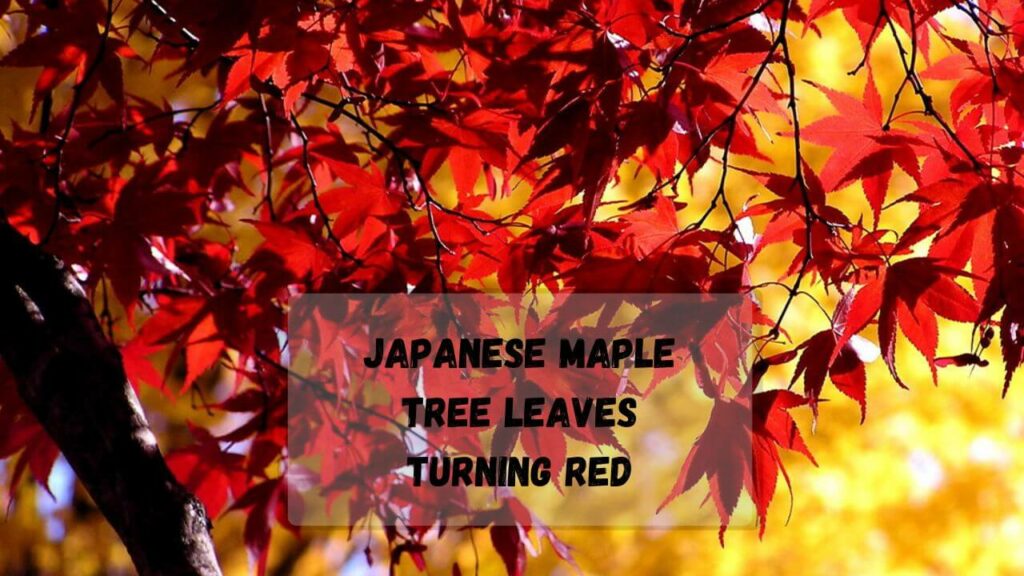
It is not uncommon to notice a Japanese maple turning its color red. They are known to change their leaf color to red in the fall, a regular occurrence. Sometimes, it can also indicate a health issue like Japanese maple anthracnose, which also turns color to red.
If you notice your Japanese maple tree leaves turning red in summer, there is something wrong that you need to look at. I recommend you first determine the cause of red leaves and consider the time of year to know if it’s normal.
Also, get an appropriate fungicide or treatment if you notice maple turning red leaves in summer. If the red leaves are a standard color change, no action is necessary.
Japanese Maple Tree Leaves Curling
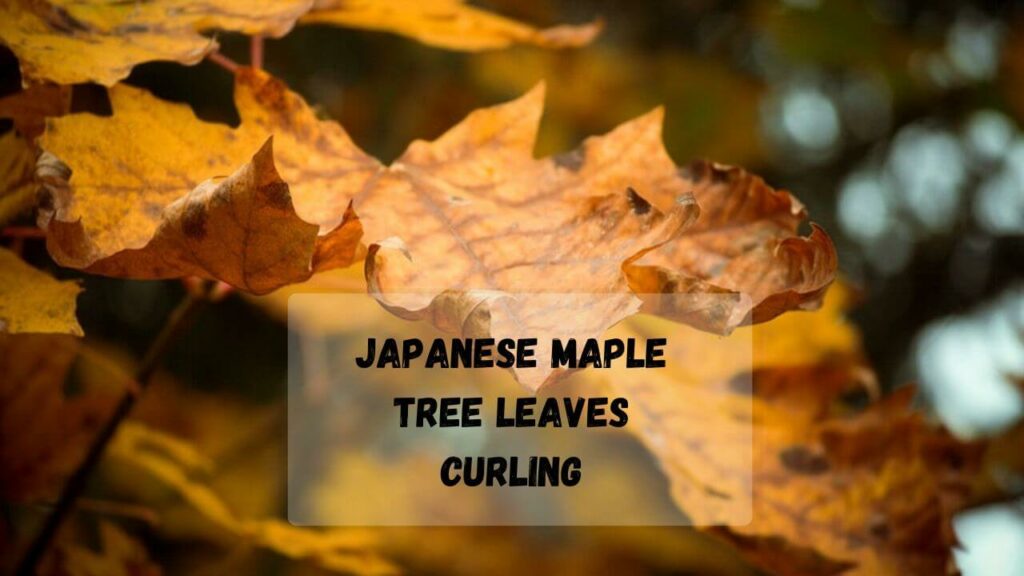
As I told you earlier, the extreme temperature can cause Japanese maple tree leaves to curl. Sometimes, I will also cause the leaves to curl. It is essential to look out for weather reports and conditions to determine the cause of curling leaves.
Sometimes powdery substances on the leaves also cause issues. If you notice any powdery substances, it is likely to be a powdery mildew which requires professional help in treatment.
Japanese Maple Tree Leaves Turning Yellow
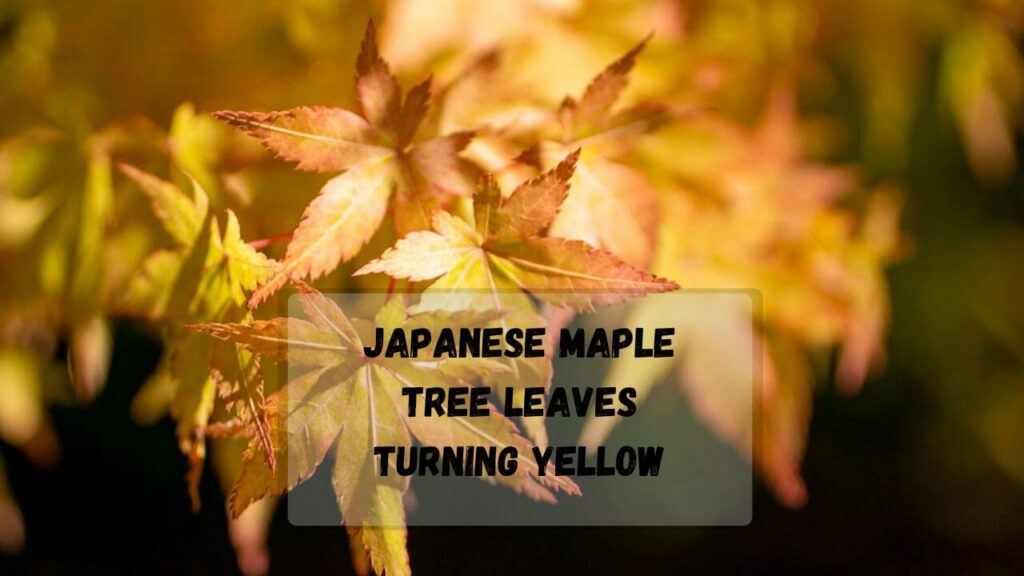
Identifying the actual cause of yellow leaves in any Japanese maple tree is essential because it is a clear sign of nutrient deficiency like nitrogen, Phosphorus, or more. Besides this, a tree may also suffer from certain diseases that could lead to yellow leaves.
It is essential to test the soil for its nutrient content and pH level from time to time. If you notice nutrient deficiency or lack of essential nutrients, consider mixing good organic fertilizers.
Like any other three, the Japanese tree also requires fertilization depending on environmental conditions, soil type, region, and variety. In the market, fertilizers are available in liquid form and granular form, effectively including nutrient deficiency.
Japanese Maple Tree Leaves Turning Black
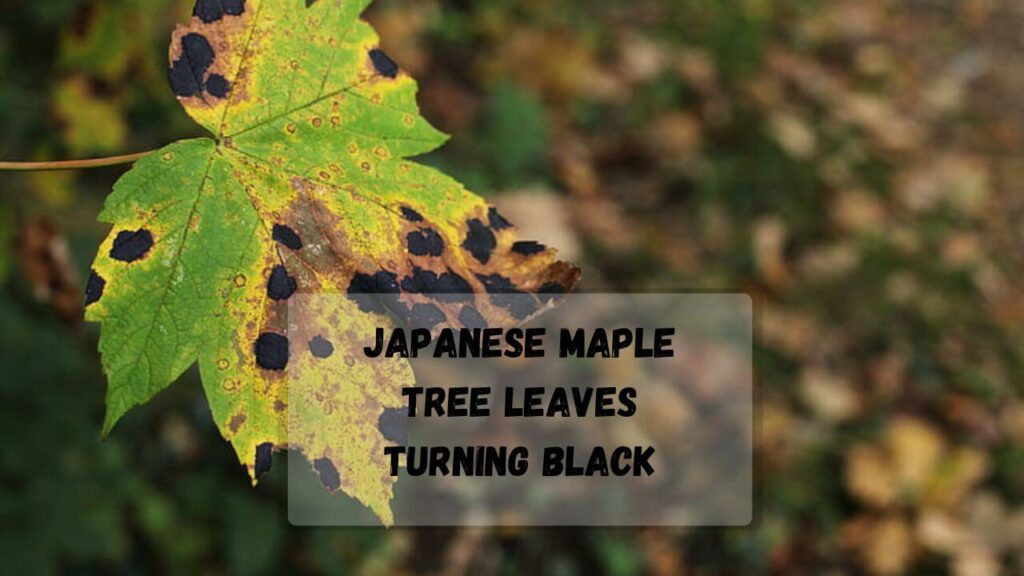
If your tree leaves are turning black, there is something wrong with its health. It is not usual or ordinary for tree leaves to turn black if healthy. It can be an indication of a sooty mold.
Therefore, I recommend you inspect your tree and look for signs of anthracnose and sooty mold that might make the Japanese maple leaves turn black.
The solution and the type of fungicide will depend upon the severity of the disease. It is better to consult even though it is an expensive call. It will be worth the cost since your tree is already dying.
9 Tips For Japanese Maple Tree Leave Care
- Make sure to plant a Japanese maple in well-drained soil with partial sun.
- It is also important to water it regularly, especially during the dry spell. Also, be sure you are not overwatering, which could lead to tree rot-like diseases.
- It is recommended to only prune a Japanese maple in late winter or early spring before new growth appears. It would help if you never pruned in late summer or every fall, as it can stimulate new growth that will not have time to harden off before winter.
- Fertilization is an essential part of its care. Make sure to use a well-balanced slow-release fertilizer in early spring. You should always use fertilizer early in the growing season as well.
- Consider applying a layer of mulch around the maple tree base to conserve Soil moisture and regulate the temperature, especially in extreme temperatures.
- It is also essential to protect your Japanese map from the hot sun and strong winds, damaging the leaves and turning them to curl or brown. Ensure it has proper shade from heavy rain, which may lead to tree root rot.
- It is essential to place a maple tree where It is protected from harsh wind and hot afternoon sun.
- While inspecting your tree, you should also pay attention to test infestation and diseases, if there are any. Treat them early if you notice pests like scale insects or diseases like verticillium wilt or dark spot.
- If there is anything unusual on your Japanese maple tree, you should consider consulting a professional or arborist.
FAQ
How Do I Know If My Japanese Maple Is Getting Too Much Water?
If your Japanese maple is not getting the proper amount of water, you will notice yellowing, leaves wilting, leaf drops, and root rot. If you notice any of these signs, consider increasing the watering frequency.
How To Know If A Japanese Maple Is Dying?
A dying Japanese maple will exhibit signs like stunted growth, wilting, leaf drop, and Browning leaves. You should also check its trunk for crackers and diseases. Root rot is another symptom of a dying Japanese maple tree.
How Do You Bring A Japanese Maple Back To Life?
If you pay close attention to its care and maintenance, you can bring a Japanese maple back to life. Consider improving the soil drainage, reducing watering, and providing proper nutrients and sunlight daily.
Conclusion.
Just like any other tree, Japanese maple trees are also prone to experiencing varieties of issues, including Brown & curling leaves, red leaves, yellow leaves, and black leaves. The causes of this problem can range from environmental stress to diseases.
The solution will eventually depend upon the cause and the severity of the problem. You should take care of your Maple tree by providing it with adequate nutrients, water, and protection from any temperature change. It would help if you regularly inspected to identify any issue at an early stage and treat it as soon as it arises.
